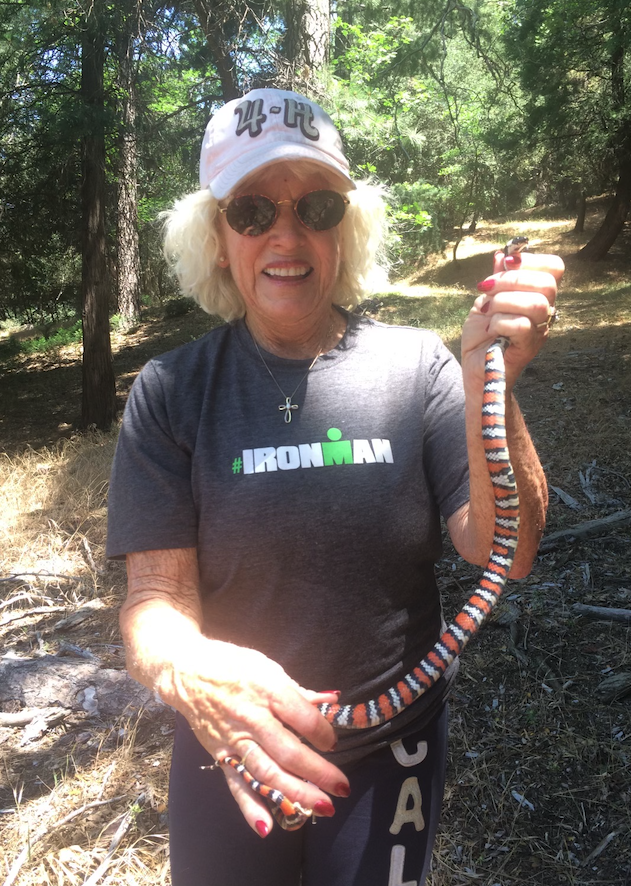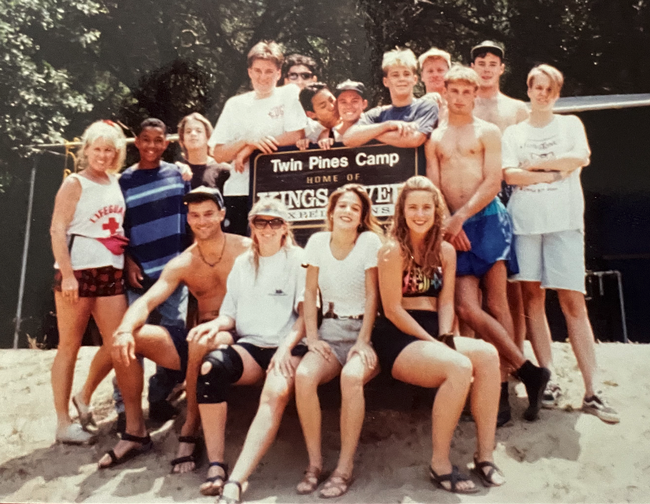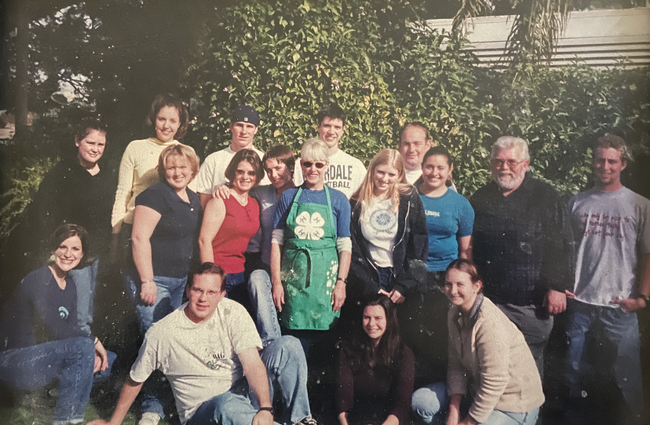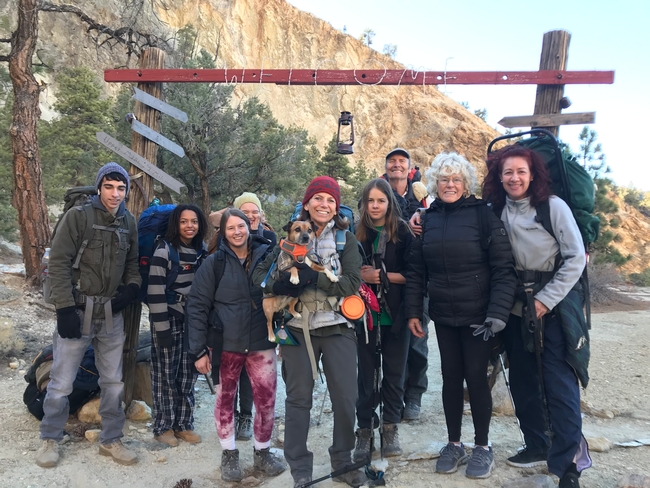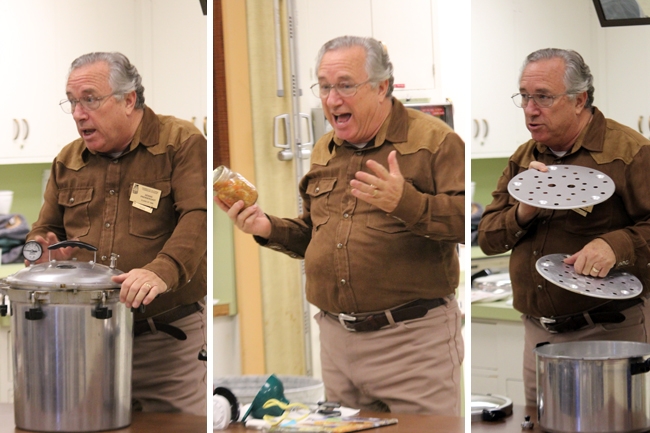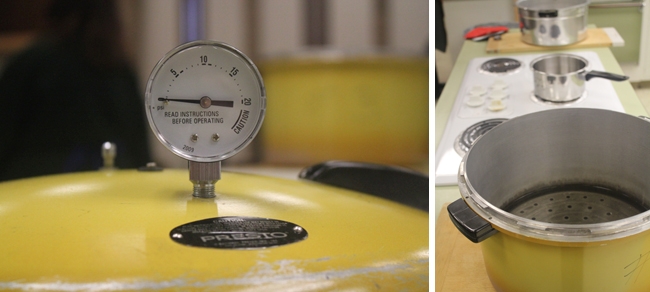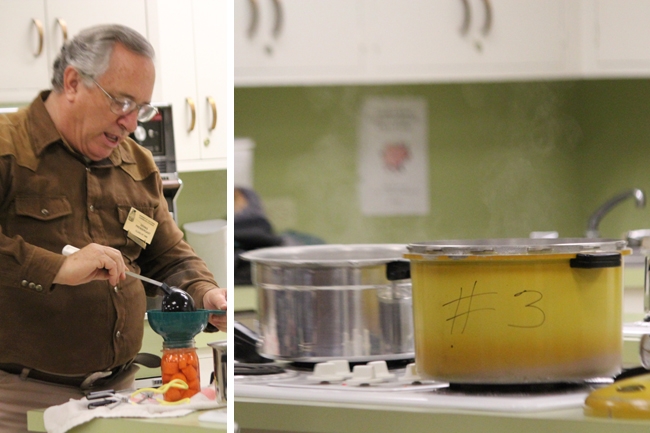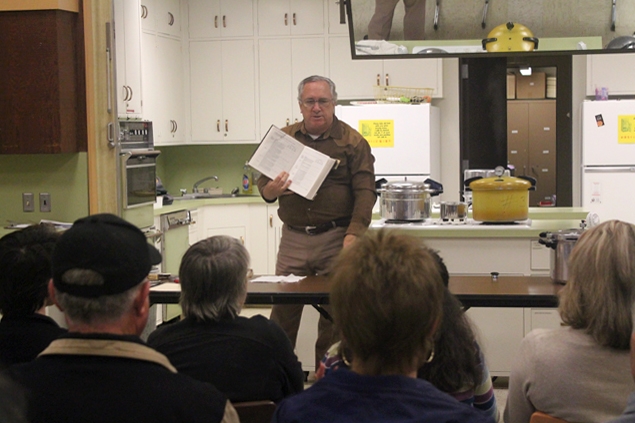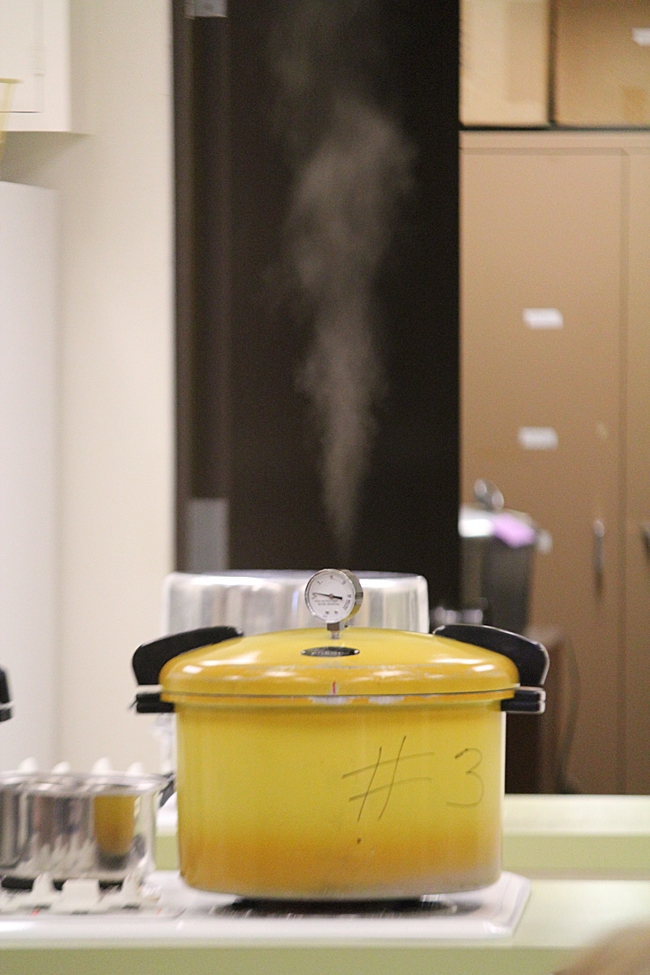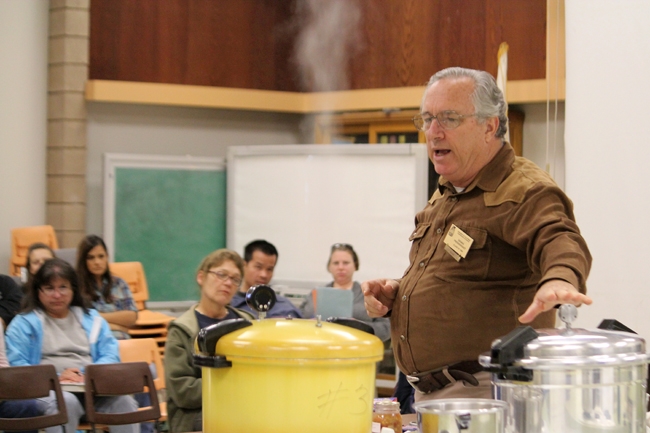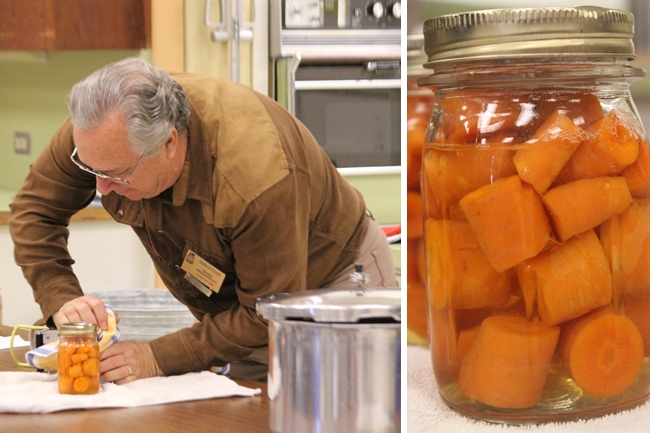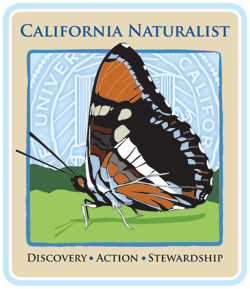Posts Tagged: volunteer
4-H volunteer of 48 years is more motivated than ever
A typical day for Dee Keese starts with a 10-mile walk at 5 a.m. and her morning wraps up with a swim. Although Keese is in her late 70s, her daily routine would not surprise you if you knew what she has been doing for the last 48 years.
For nearly a half-century, Keese has been the 4-H community leader for the Palos Verdes Peninsula (PVP) club in Los Angeles County. A youth development program managed through local University of California Cooperative Extension offices, 4-H uses hands-on learning experiences to empower youth to build self-esteem and connect with their communities as emerging leaders.
“When you're pushing 80, working with young people helps to keep you young,” Keese said.
4-H has been a game changer in many ways
In the 1970s, Keese moved to the Palos Verdes area with her first-born son who had a learning disability. Others treated him differently in school, and it didn't help that he was the new kid in town. A neighbor encouraged Keese to enroll her son in 4-H.
“She told me, ‘You've got to put your son in 4-H so he can feel good about himself,'” explained Keese. “And let me tell you, it changed my life.”
In 1978, two weeks before her fifth child was born, Keese became the 4-H PVP club's community leader and has been in the role ever since.
While reflecting on her earlier days with 4-H, Keese remembered when most members were boys. Girls were not intentionally excluded at the time; clubs just didn't attract them. When girls eventually joined 4-H, it was a game changer.
“All of a sudden, the program shifted focus from solely agriculture and animals to include home economics like cooking and sewing,” Keese said. “Now, all my sons do the cooking in their homes. It's a good thing! Because we're moving away from traditional domestic duties, men and women are sharing roles, as they should be.”
The PVP 4-H club offers activities like archery, sailing, surfing and geocaching. “Everything we do is to help our youth be better as adults, out in the real world and in the workforce,” said Keese. “We're relying on the internet too much. Kids need to get outside and do things.”
Over the years, Keese has taken members – who range in age from 5 to 19 – on numerous hikes in places like Havasupai Indian Reservation and Mt. Whitney. She's taken them kayaking on the Colorado River and, these days, co-hosts old-fashioned card game nights on the weekends with other community members.
As a lifeguard and water safety instructor, Keese gives free training to interested 4-H members to become lifeguards. Training courses usually cost well over $200 per person. “If they're interested, I train them and they have another skill to use. And it benefits our club,” said Keese. “When we have pool parties or beach days, my kids are prepared to step in and help.”
‘She will help anyone and everyone at any time'
Ace Yeck, former president of the PVP 4-H club, met Keese 12 years ago and decided to become a 4-H member when he was in fourth grade, following a convincing conversation with her. “She just kept giving me opportunities,” said Yeck.
Currently a third-year undergraduate at Loyola Marymount University studying entrepreneurship, Yeck credits 4-H for preparing him for college. “I got all my community service and public speaking practice through 4-H. I remember doing beach clean-ups, feeding the homeless, helping out at the Christmas fair, and all kinds of events,” he shared.
During his years with 4-H, Yeck was elected to the state board as an ambassador before he went on to represent 4-H at the national level. “Dee encouraged me every time, so I kept going,” he said.
Keese admitted that her life is so full and fun because of 4-H. Her motivation stems from the growth and progress that her students experience. “My kids let me know when I've done something to impact their life. It keeps me motivated,” she said.
While thinking about the members she's had over the last 48 years, she couldn't help but stress how important it is that they feel safe. Keese recalls one student who is gay and had a challenging time getting his parents to understand because of religious and cultural barriers. “The family's priest called me and told me that this student felt like I was the only one who loved him,” she said.
“I can talk about Dee forever,” said Yeck. “One of her best qualities is that she will help anyone and everyone at any time. She wakes up at 5 a.m. and goes to bed at, like, 10 p.m. During that time, she's always helping people,” he added.
Because Keese comes from a different generation compared to the kids in her 4-H club, she attributes her successful impact to her ability to adapt. “If we want to keep kids in this, we've got to be flexible! And you've got to do things they like. We can't do things the way it's always been done before,” said Keese. “We have to be flexible.”
To Keese, 4-H is not just an opportunity to teach life skills or introduce kids to agriculture. It's a chance for them to build community.
“That's what I think my generation does well, having grown up in the '50s and '60s,” Keese said. “We're all about that communal living.”
Peek inside a UC Master Food Preserver kitchen
I brought my camera with me to a Master Food Preservers class Saturday at UC Cooperative Extension Sacramento County on pressure canning. In case you’ve been thinking about participating in a Master Food Preservers class, here’s a peek inside the Sacramento demonstration kitchen:
“Cooking is a whole different ball game from canning — a whole different science,” Prendergast said. He's been a UC Master Food Preserver since 1995, and regularly teaches the monthly Saturday morning classes in Sacramento county. Next month's Saturday morning class will be on dehydrating, 10 a.m. to 12 p.m., Dec. 10.
UC Master Food Preservers is a volunteer organization structured in a way similar to UC Master Gardeners. Master Food Preserver candidates complete training to become knowledgeable in food preservation and then are required to volunteer time sharing their knowledge with the public by teaching classes and answering questions.
UC Cooperative Extension currently has Master Food Preservers in four counties:
- Sacramento
- El Dorado (now known as Central Sierra)
- Los Angeles
- San Bernardino
In Sacramento County, the Master Food Preservers offer a monthly class on Saturday mornings that focuses on techniques of a specific preservation process – either water-bath canning, pressure canning or dehydrating. Once a month on Wednesday evenings, the group offers classes that focus on preserving specific fruits or vegetables.
This Wednesday’s class is on “Fall Fruits and Winter Squash” which will include quince and pomegranates among others. The class is 6:30 – 8:30 p.m. at the UC Cooperative Extension office, 4145 Branch Center Road in Sacramento; registration to attend is $3.
Sharing the 'California dream'
We live in an orchard. It’s pretty much like the California dream that Sunkist and the railroads promised to people back East and to dust bowl refugees many years ago – an orange tree in your own backyard! For many of us in the Sacramento region, the dream came true.
Right now the citrus is ripe. Once you start looking, you see it everywhere – bright navel oranges, juicy grapefruit hanging in clusters, glistening lemons and sweet tangerines – some behind fences and some right out front by the street.
Often the trees are big and old, planted long ago. Much of this urban and suburban fruit doesn’t get harvested; people are too busy, the trees get too tall, or there’s just too much fruit to handle at one time. Meanwhile thousands of people in our own community don’t have fruit, fruit trees, backyards or even homes.
Soil Born Farms Urban Agriculture Project is helping Sacramento people share the California dream with their neighbors through the Harvest Sacramento project. Last Saturday I joined a crew of volunteers to pick citrus in Sacramento’s Oak Park neighborhood for donation to the Sacramento Food Bank. I had a great time doing it and met some wonderful folks. The food bank distributes the fruit at mobile food pantries over the next week.
My friend and I arrived at McClatchy Park at 9 a.m. along with a couple of dozen other volunteers. We divided into four or five teams, loaded our vans and pickups with ladders, buckets, picking poles and boxes provided by Soil Born and headed off to the first of three houses whose residents had agreed to let us pick their fruit. Our team included a mom with two enthusiastic children, three young members of Sacramento’s new Green Corps in matching tee shirts, the two of us, and Shannon, our team leader.
Shannon made contact with the resident at the first house, gave us safety instructions, and we got started. We set up ladders and picked by hand and with extendable picking poles with little baskets on the end to grab the fruit. This house had a small orange tree and a large lemon tree in the side yard. We quickly picked a box of oranges, stripping the tree and delivering a few to the front door for the owner to enjoy, then spent about a half hour picking three boxes of lemons from the upper half of the lemon tree, leaving the lower fruit for the homeowners to pick. Then we were off to the next house on our list.
The second house had an awesome huge orange tree and a smaller lemon tree in the backyard, which kept us all busy and yielded another four boxes of fruit. Just a few houses down the street, at our last stop, was the biggest grapefruit tree I had ever seen. We extended the picking poles all the way, set up all our ladders, picked four boxes of grapefruit and left what we couldn’t reach. We took all the fruit back to the park, filling big bins that the food bank picked up, and said goodbye to our new friends. Of course we got to take a few tasty samples of the fruit home with us to enjoy.
Soil Born Farms’ Harvest Sacramento Project will be harvesting fruit in the South Land Park neighborhood on Feb. 19 and in the Curtis Park neighborhood on Feb. 26. Volunteers and donations of fruit that needs harvesting are both welcome. For more information: http://www.soilborn.org/volunteer.html

Harvesting team.

Young picker.
UC aims to educate a corps of California Naturalists
The University of California’s newly launched California Naturalist program is a way for the institution to spread research-based knowledge about environmental stewardship and nature preservation. Rather than simply educating students, the program engages citizens of all ages through discovery and action in the science of conservation.
After completing the program, California Naturalists will become a committed corps of citizen scientists trained and ready for involvement in natural resources education and restoration.
“To ensure the sustainability of natural resources in California, we need citizens who participate in natural resource conservation, understand the importance of land use decisions and climate change resilience,” said Julie Fetherston, a UC Cooperative Extension program representative for Mendocino and Lake counties. “The California Naturalists will understand the need for biodiversity, be informed about limitations of our water and energy resources, and be aware of the role that science and UC play in sustaining our natural ecosystems.”
Participants in the program take a 40-hour course that combines classroom and field experience in science, problem-solving, communication training and community service. The course materials are offered to sponsoring organizations across the state that have a need for volunteers with an appreciation for natural systems and a desire to be involved in their protection. The curriculum covers ecology, geology, plant communities, interpretation and wildlife. Regional modules are also being added.
“We have developed a flexible curriculum that can be adapted by many different organizations,” Fetherston said.
Organizations that might offer the California Naturalist training are the California Native Plant Society, Audubon societies, land conservation organizations, nature conservancies and state and national parks.
Fetherston and UC Berkeley natural resources specialist Adina Merenlender pilot-tested the program in Sonoma County, where the coursework was offered in collaboration with the Pepperwood Preserve, a coast mountain range nature preserve, and the local community college. The result was a committed and informed group of card-carrying California Naturalists ready to extend their knowledge as volunteers for the Pepperwood Preserve.
For more information or to inquire about offering the program, see the California Naturalist website.

